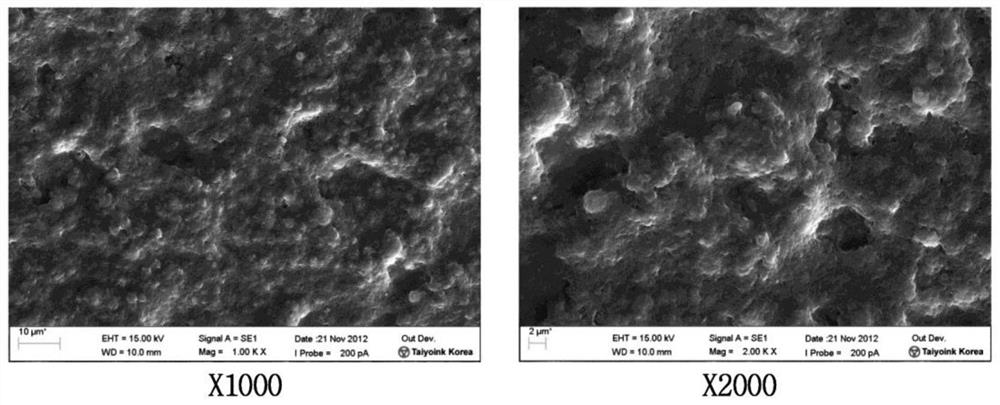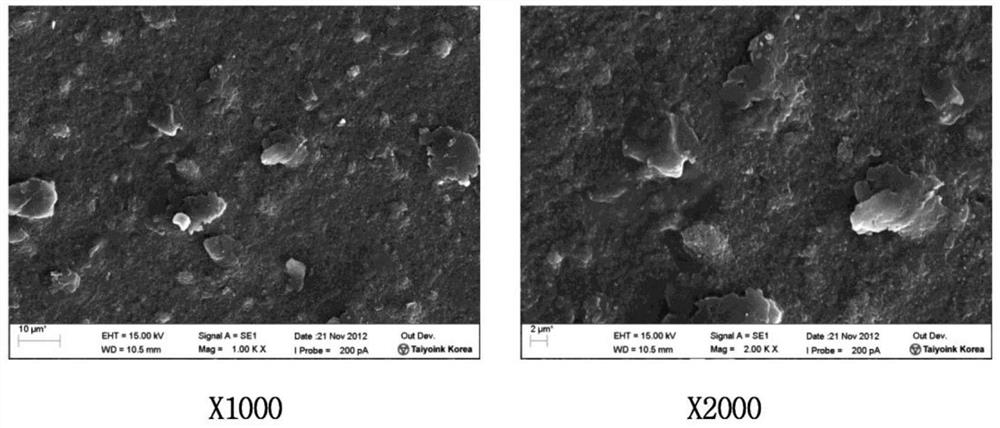Spacer for optical device lens and method for manufacturing same
A technology for optical instruments and manufacturing methods, applied to optical components, instruments, optics, etc., can solve problems such as glare, burrs, and large thickness deviations, and achieve scratch resistance, improved chemical resistance, and excellent processability Effect
- Summary
- Abstract
- Description
- Claims
- Application Information
AI Technical Summary
Problems solved by technology
Method used
Image
Examples
manufacture example 1
[0063] 1. The composition for the organic layer of this invention which consists of the following components was prepared.
[0064] Table 1
[0065]
[0066]
[0067] 2. The prepared above-mentioned composition was coated on a copper foil having a thickness of 18 μm by micro gravure coating (Micro Gravure Coating).
[0068] 3. In a box oven, dry with hot air at a temperature of 45° C. for 6 hours, and heat cure at a temperature of 150° C. for 30 minutes, thereby forming an organic layer with a film thickness of 4±1 μm.
[0069] 4. After processing (punching) the base material on which the organic layer formed of the cured composition was formed through a circular through-hole, an annular spacer was manufactured.
[0070] 5. After immersing the above-mentioned spacer in the oxidation treatment chemical solution (LDB A, LDB B of YMT Company) for 10 minutes to form an oxide coating film on the exposed copper, wash with water to remove the chemical solution.
[0071] 6. Af...
manufacture example 2
[0073] A conventional film-type separator was manufactured by the following method.
[0074] 1. A conventional coating liquid for light-shielding formation of a film-type spacer containing the following components was prepared.
[0075] Table 2
[0076] Element Content (parts by weight) Hydroxy acrylic acid (50% by weight of solid content) 153.8 Isocyanate (75% by weight of solid content) 30.8 Carbon black (black chlorinated carbon, solid content weight 100%) 24 Silica (average particle size 5μm) 3.0 Methyl ethyl ketone, toluene (solvent) 611.4~1091.4
[0077] 2. The prepared coating liquid for light-shielding formation was coated on black polyethylene terephthalate having a thickness of 25 μm by microgravure coating.
[0078] 3. Drying with hot air at a temperature of 45° C. for 24 hours in a box oven, thereby forming an organic layer with a film thickness of 3±1 μm.
[0079] 4. After processing the hardened spacer light-shieldi...
manufacture example 3
[0081] A conventional copper or copper alloy spacer was produced by the following method.
[0082] 1. Through the circular through hole, the copper plate with a thickness of 0.035mm was used to manufacture the annular spacer.
[0083] 2. Surface treatment was carried out by immersion in a sulfuric acid solution (10 wt %) for 2 minutes.
[0084] 3. The spacer was immersed for 10 minutes in a treatment solution to which an oxidation treatment solution (LDB A, LDB B from YMT Co., Ltd.) was added.
[0085] 4. The spacer was washed with water, and dried in an oven at a temperature of 90° C. to complete the manufacture.
PUM
| Property | Measurement | Unit |
|---|---|---|
| The average particle size | aaaaa | aaaaa |
| Thickness | aaaaa | aaaaa |
| Thickness | aaaaa | aaaaa |
Abstract
Description
Claims
Application Information
 Login to View More
Login to View More - R&D
- Intellectual Property
- Life Sciences
- Materials
- Tech Scout
- Unparalleled Data Quality
- Higher Quality Content
- 60% Fewer Hallucinations
Browse by: Latest US Patents, China's latest patents, Technical Efficacy Thesaurus, Application Domain, Technology Topic, Popular Technical Reports.
© 2025 PatSnap. All rights reserved.Legal|Privacy policy|Modern Slavery Act Transparency Statement|Sitemap|About US| Contact US: help@patsnap.com



